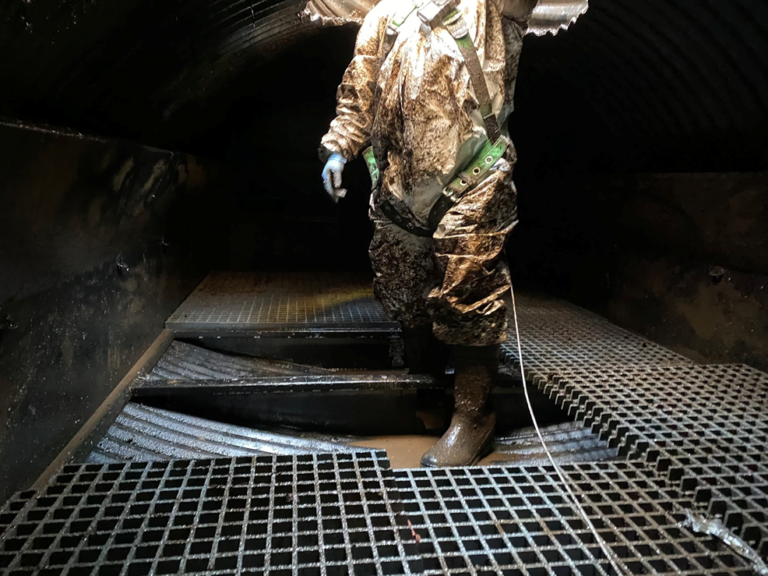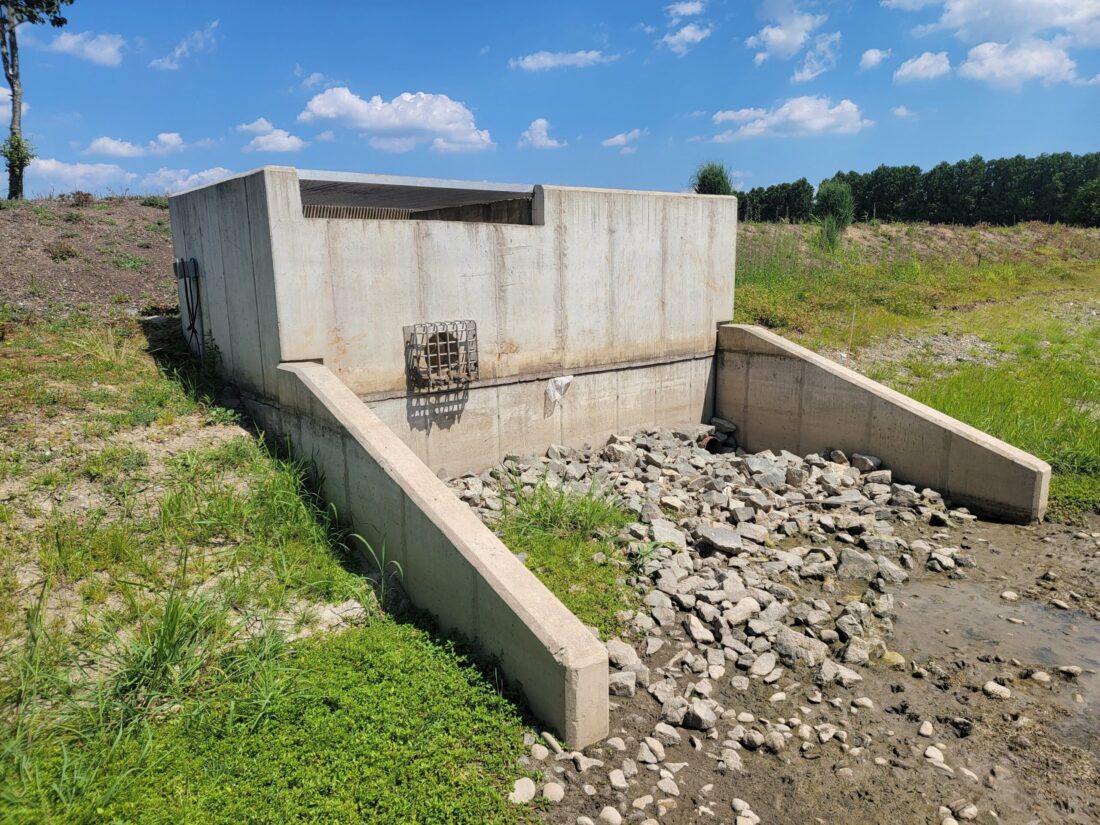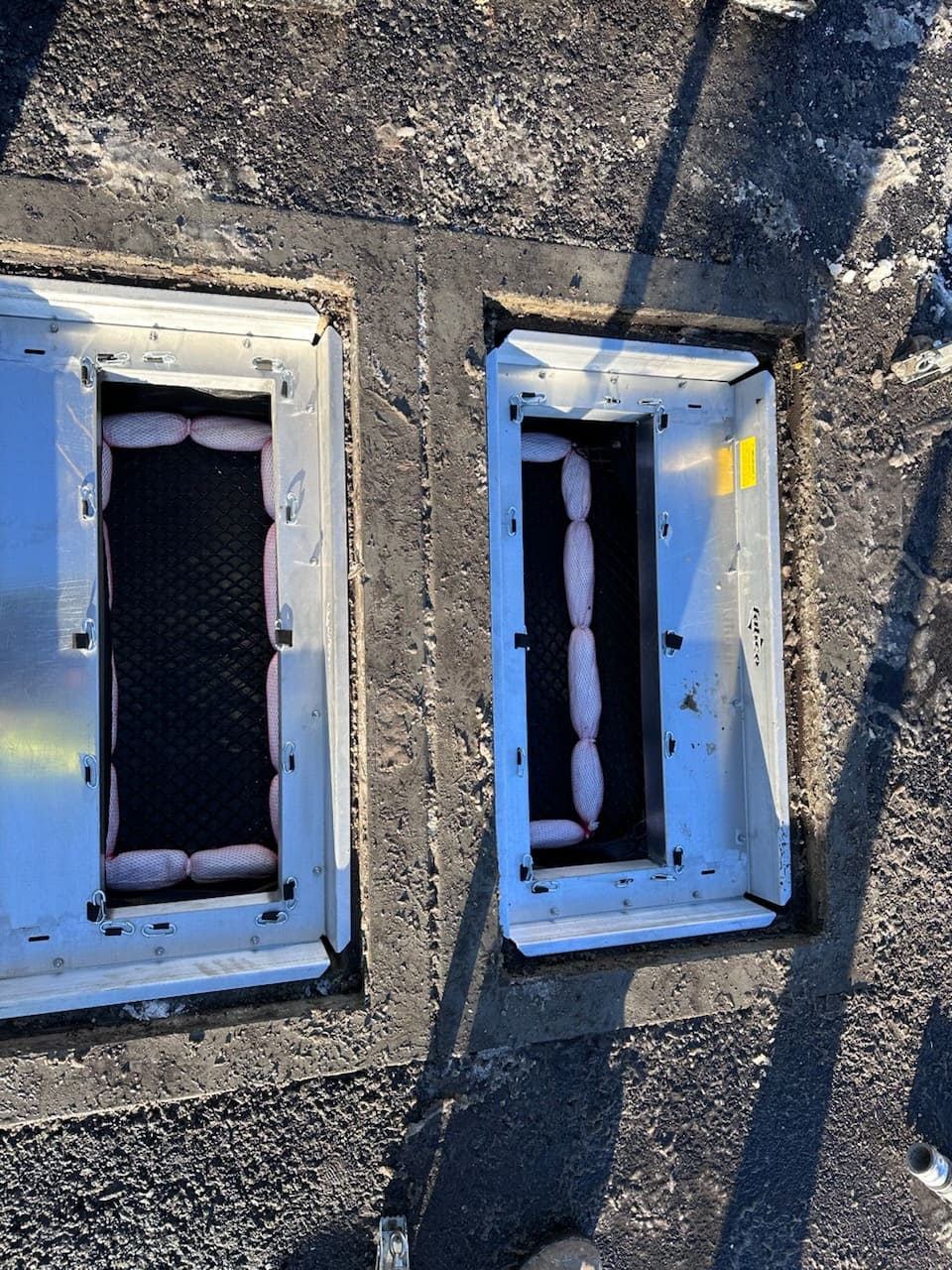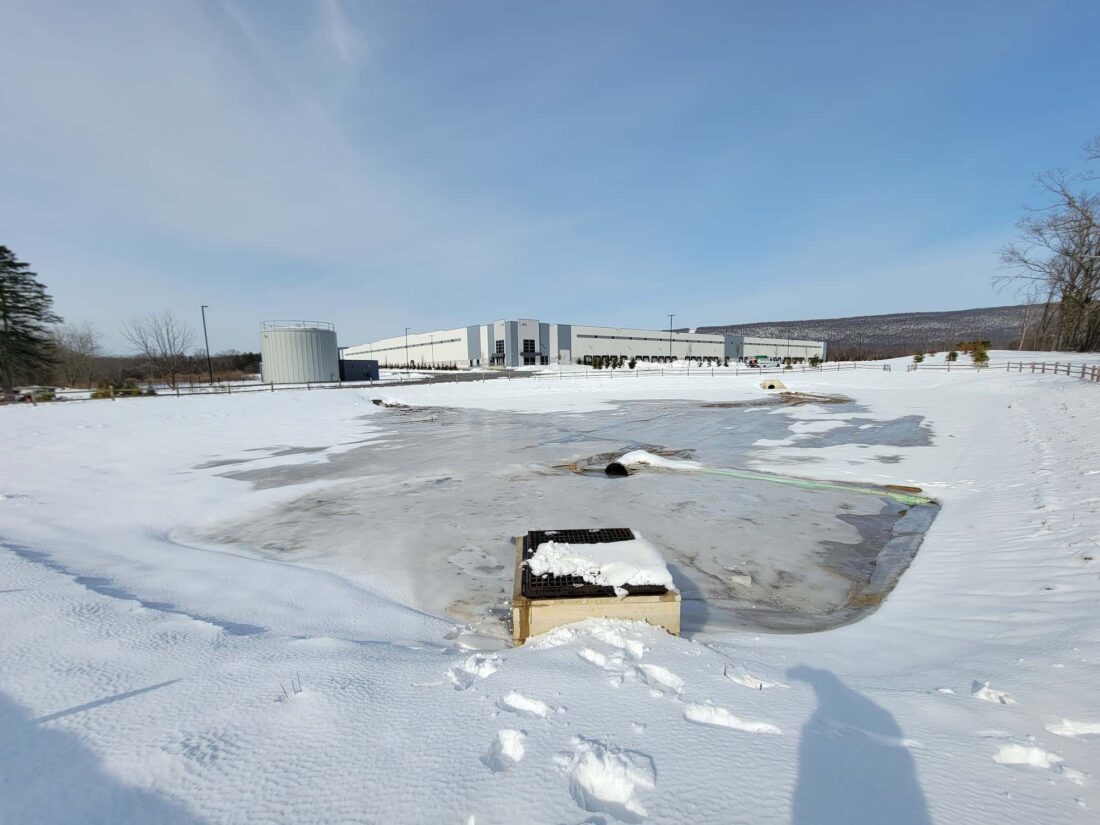
Confined Space Safety in Stormwater
Last Updated on June 16, 2022 by Stormwater Compliance Solutions
Stormwater systems are increasingly being designed and constructed with underground components for both water quality treatment and water quantity control. These methods are often chosen by the design engineer to maximize the develop-able area of the property above ground. While the advantages of these types of systems might be beneficial for real estate developers and site owner, they pose inherent risks for maintenance personnel in terms of safety within a confined space.
Entry to these systems is occasionally needed for inspections and maintenance. Following a confined space risk assessment, confined space safety procedures must be established and followed in order to ensure a safe working environment for all personnel involved.
One of the first steps in the confined space risk assessment process is to determine if there are other ways to accomplish the same task without making a confined space entry. If that is possible, avoiding entry to underground systems is the preferred alternative. Non-entry services can be accomplished by using cameras or other remote tools to do the work from the surface.
If the objectives of the task at hand cannot be completed without entry into the system, the next step is to create a confined space entry procedure in accordance with OSHA standards (CFR1910.146), and execute the plan. A job hazard analysis (JHA) should be prepared for each project and presumed entry. Following the client’s or safety manager’s approval of that JHA, a confined space permit should be filled out to accompany the crew conducting the work.
The confined space entry procedure begins with the identification of all active and potential hazards and the creation of instructions detailing how personnel will deal with those risks if/when they are encountered. A pre-project safety meeting should be conducted with all people involved with the project. At this point, all team responsibilities should be established, a work plan should be implemented, and a confined space rescue plan should be created in the event of a problem.
The second step in confined space safety should be an inspection of the integrity of the manholes, ladders, tanks, pipes, and access areas. The next step, which can happen concurrently with step two in the confined space entry procedure, the air should be tested to ensure that all parameters have been met for air quality prior to proceeding. Mechanical air ventilation, such as a fan blower, is the preferred method for clearing the air space of any potential hazardous gas. Removing air from the vault, tank, or pipe network is favored over blowing air into the chamber because it removes the potential for hazardous gasses from above ground work area to be blown directly into the chamber before or during entry.
After all hazards have been eliminated, the next step is to safely enter the manhole using a winch, tripod or davit hoist system with appropriate fall protection. Ladders in manhole risers can be used for descent, but the ladder rungs must always be inspected prior to full weight bearing. The entrant should cautiously descend on the ladder while being tied off using a self-retracting life line (SRL) as a form of fall protection. Another method of entry can be to lower the entrant on the hoist system while being suspended over the opening. This method is very safe because it does not rely on a ladder, however the entrant should be trained on this type of entry and feel very comfortable being suspended above the open confined space. At Stormwater Compliance Solutions, we like to use a manual winch for lowering personnel below grade while being doubly connected to the SRL for safety. Once the entrant has fully descended, the winch can be disconnected and the SRL should remain connected throughout the work process in order to ensure a high level of confined space safety.
At this point, underground work, either inspection, cleaning, or repair can take place. All tools should be safely lowered down to the entrant on a secured line. A respirator, mask, face shield or safety glasses should be worn depending on the task and atmospheric conditions.
Safety within a confined space is dependent on the continuous air monitoring from the surface, which needs to be done the entire time that the entrant is underground. The attendant on the surface should monitor this continuously for Oxygen levels, Carbon Dioxide, Carbon Monoxide, Hydrogen Sulfide, Methane, and volatile organic compounds (VOC’s). Hydrogen Sulfide and Methane are very rare in stormwater applications, so it is the O2, CO2, and CO that are of more immediate concern. The maintenance to stormwater treatment devices, however, frequently requires the use of various glues and adhesives which often contain VOC’s and these must be eliminated from the confined space work area.
It is very important that the attendant’s sole task is to monitor and support the person below grade. The attendant should have a direct line of verbal, visual or signed language communication with the entrant. Handheld radios work well in this situation, providing a direct line of verbal communication to ensure safety within a confined space.
Whenever fatigue becomes evident, the entrant should be removed for a recovery break and a new entrant should be suited up for entry. When horizontal entry is needed and the entrant cannot be safely removed via the SRL, a confined space rescue team should be on site in case of an emergency. If there is any doubt that the safety of the entrant cannot be guaranteed throughout the entire process, entry to the system should not be conducted. The use of a rescue team should be implemented to ensure confined space safety at all times when the potential for a recovery operation is even a question.
Stormwater systems can be a deep labyrinth of underground pipes, chambers, filtration systems, settling vaults, and even pumped systems. It is imperative that these systems are designed for safety within a confined space during future maintenance and that the maintenance crew employ safe confined space entry procedures. Without that, there is no reason to build such a system.
For more information on OSHA confined space safety requirements and other SWPPP training items, please call our office or email our support group at [email protected].




